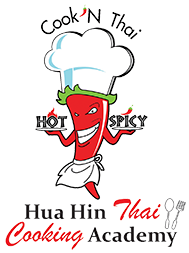
Thai Food
“Thai food offers a variety of flavours and tastes. The subtle mixing of herbs and spices and market-fresh ingredients makes dining a special culinary experience.”
Eating ranks high on the Thai scale of pleasures, and meals are informal affairs. The staple is rice, either ordinary or glutinous, accompanied by a variety of dishes that can be eaten in almost any order, and seasoned to individual taste with several condiments such as fish sauce and chilli peppers. Most often there will be a soup of some kind, a curry, a steamed or fried dish, a salad, and one or more basic sauces. Desserts may consist of fresh fruit or one of the many traditional Thai sweets.
Much of what is known about Thai cuisine evolved in the Central region. Rice, fish, and vegetables, flavoured with garlic, black pepper, and nam pla (fish sauce), along with an abundance of fresh fruit, comprised the basic diet of Sukhothai. With the rise of Ayutthaya, other elements were added. That now essential ingredient the fiery chilli pepper – was introduced at this time, along with the equally popular coriander, lime and tomato. These may have been brought from their native South America by the Portuguese, who also left a lasting imprint in the form of popular Thai sweets based on egg yolk and sugar. Other influences came from India, Japan, Persia, and especially China.
A century ago, meals were eaten by hand, pressing the rice into the little balls; today a spoon and fork are used for eating rice, while chopsticks are used for Chinese-type noodles.
Thai food differs from region to region. Unlike the North and Northeast, where glutinous rice is popular, Central Thais like the fragrant plain variety, most commonly steamed. In addition to fresh-water fish, there is seafood from the Gulf of Thailand, as well as a wide range of fresh vegetables. Chinese-Thai food is popular in cities like Bangkok, particularly in the form of numerous noodle dishes.
The Central region also has what is called the Royal cuisine, a more sophisticated version of the regional cuisine. Influenced by the kitchens of the Royal Court, the dishes are elaborately put together, making it as much of an art form as a culinary masterpiece.
The food of the North is a distinctive as its culture. Steamed glutinous rice is preferred, traditionally kneaded into small balls with the fingers. Northern curries are generally milder than those of central and northeastern Thailand.

